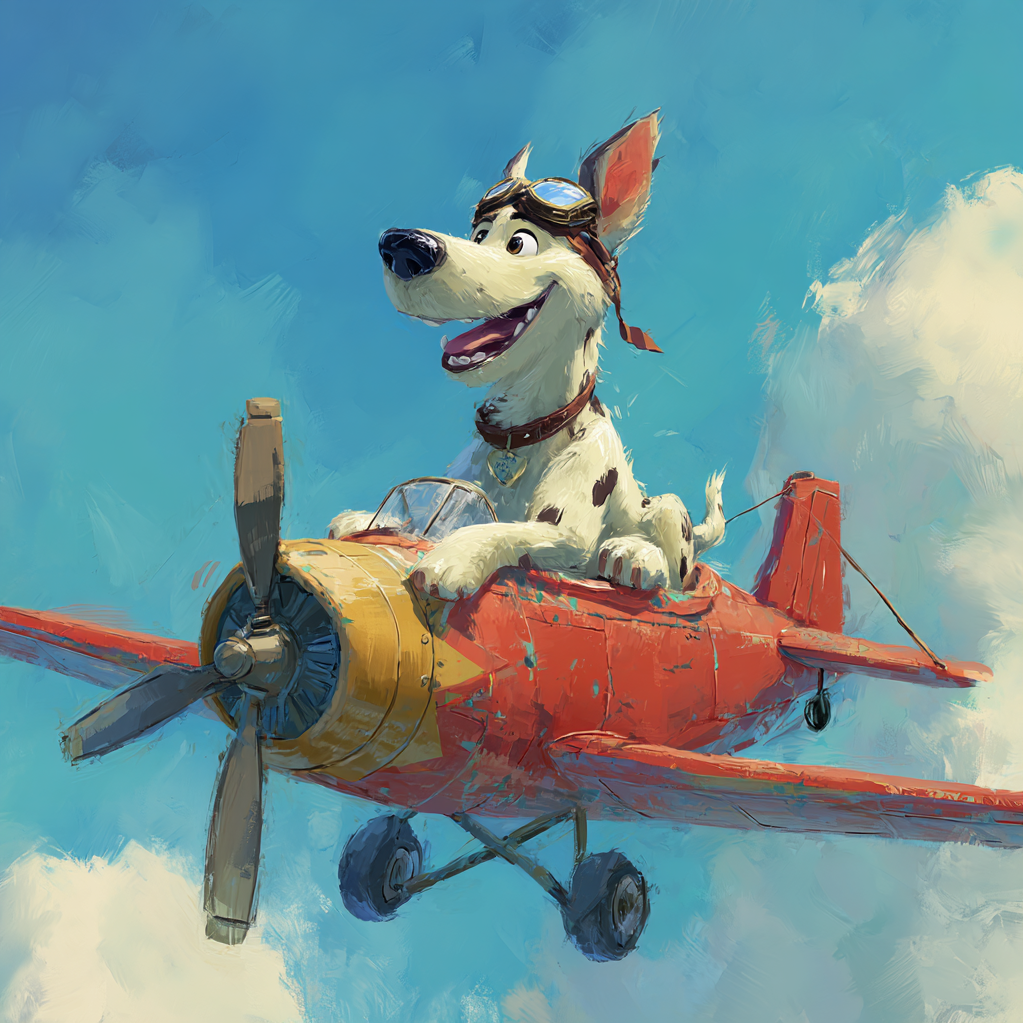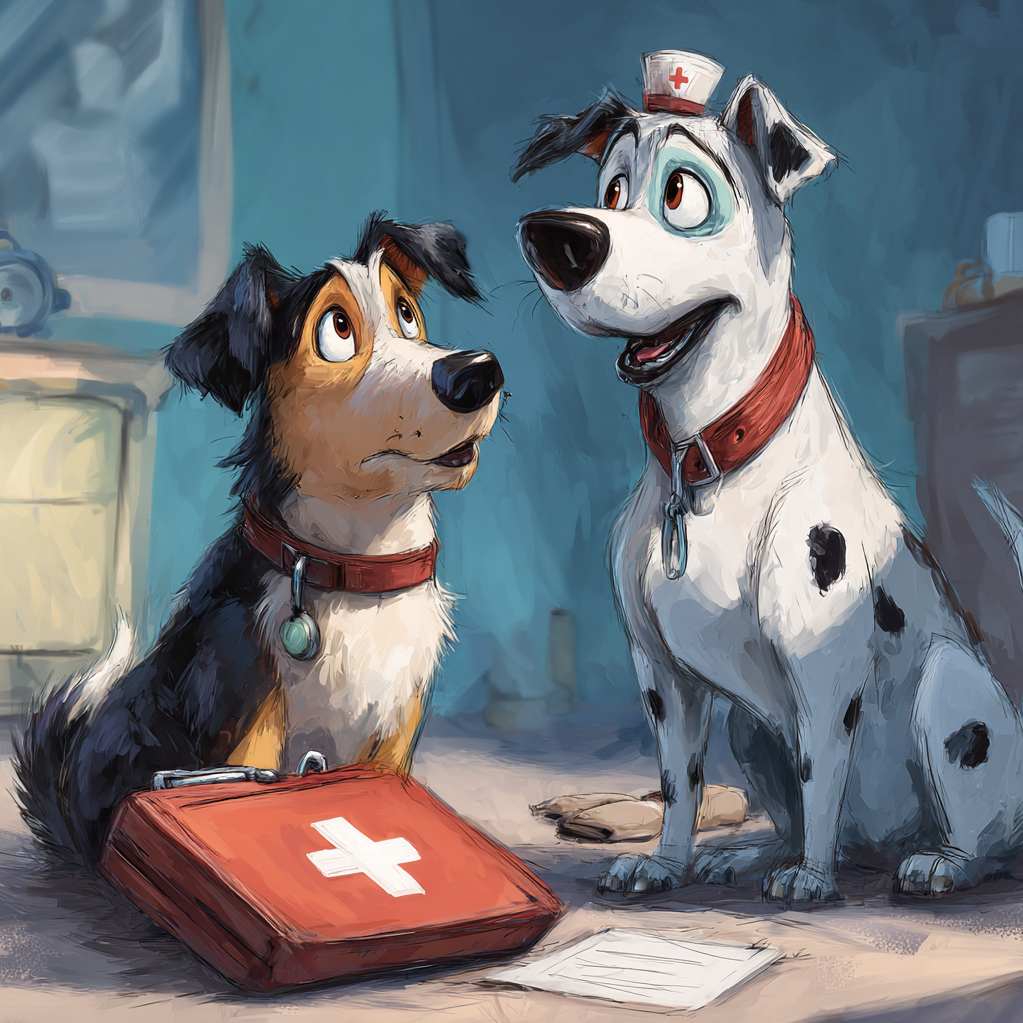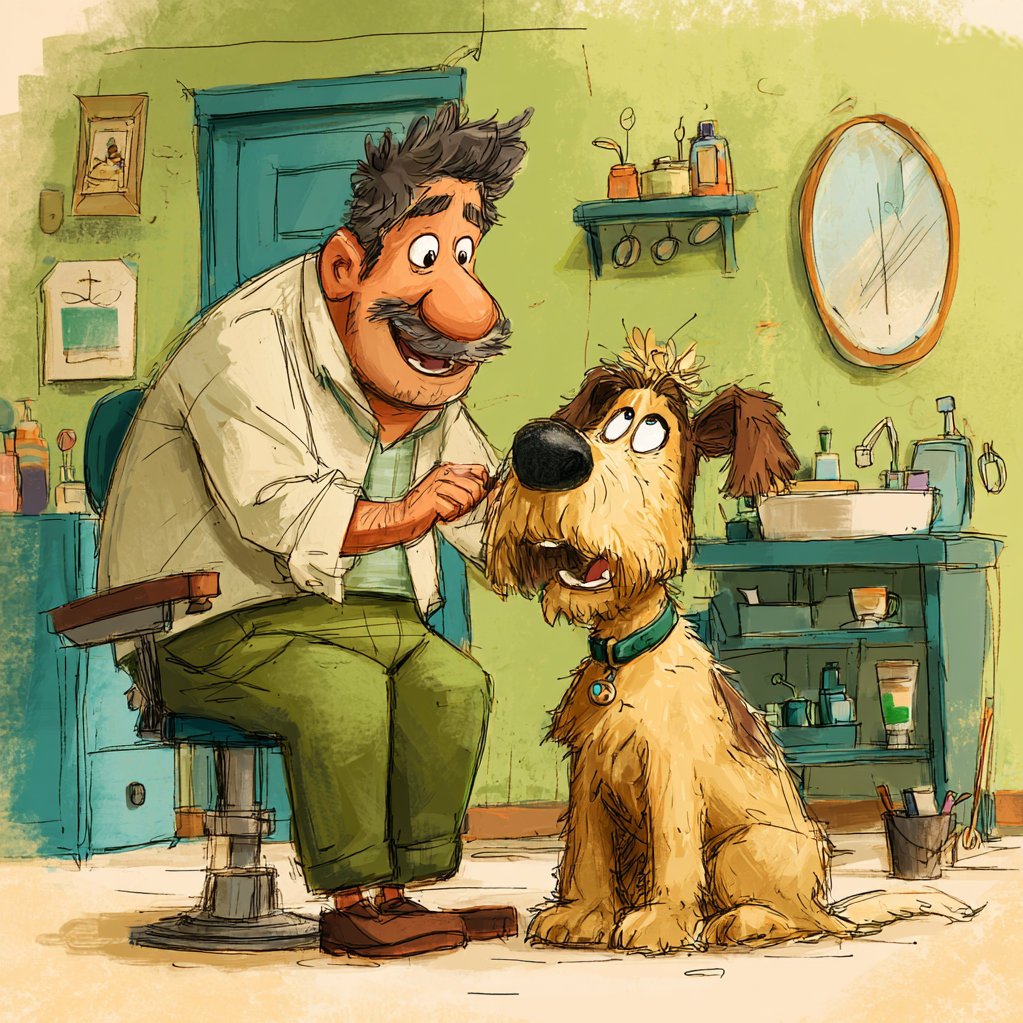The Den on the Go: Mastering the Art of Canine Travel
The open road beckons. A plane ticket glows on your screen. The only thing better than adventure? Sharing it with your four-legged shadow. But beneath the Instagram-perfect vistas lies a harsh truth: travel unravels a dog’s world. The familiar scents vanish. The predictable rhythms shatter. That crate becomes a spaceship hurtling through the unknown. Master this transition, and you forge an unbreakable bond. Misstep, and you risk trauma, escape, or worse. This isn’t about packing a bowl; it’s about engineering mobile security for a creature wired for territorial certainty. Time to build a portable den.

The Golden Rule: Safety is the Compass, Not an Option
Forget “fun” for a moment. Travel demands risk mitigation. Your dog’s life depends on these non-negotiables:
- Rock-Solid Identification:
- Microchip: Implanted and, crucially, registered with current contact info. A collar can break or slip. A chip is forever. Ensure the database has your travel contact number too.
- Secure Collar & Tags: A well-fitting buckle collar (or martingale for escape artists) with a durable tag engraved with your cell phone number (not home phone!) and destination contact. Add a temporary travel tag if needed. Consider “I’m Microchipped” on the tag.
- GPS Tracker: For high-value breeds, escape-prone dogs, or wilderness travel, a real-time GPS collar (Fi, Whistle, Tractive) is worth its weight in gold during a panic bolt.
- Health & Legal Paperwork: The Bureaucratic Armor
- Vet Check: Schedule a pre-trip visit. Ensure vaccinations (especially Rabies!) are current. Discuss parasite prevention for your destination (heartworm, ticks, fleas can be regional).
- Health Certificate: Often mandatory for interstate travel (within the US, typically within 10 days of travel) and absolutely essential for air travel and international journeys. This is an official vet document proving health and vaccination status. Start this process WEEKS in advance for international trips – requirements are complex and time-sensitive.
- Rabies Certificate: Carry the signed original, even if it’s recorded on the health certificate. Some states/countries demand it.
- Destination Research: Know local leash laws, breed restrictions, required permits (e.g., for national parks), and quarantine rules (critical for international travel!). The USDA APHIS website is essential for international requirements.
The Road War: Conquering Highways & Byways
The car offers control. But it’s a rolling box of potential hazards.
- Confinement: The Non-Negotiable Shield
- Crates: The gold standard for safety. A properly sized, crash-tested crate (Variocage, Gunner kennels are top-tier; airline-approved hard shells like Petmate Sky Kennel are good) absorbs impact forces and prevents your dog from becoming a projectile (or being crushed) in a crash. Anchor it securely.
- Harnesses: A certified crash-tested harness (SleepyPod Clickit Terrain, Ruffwear Load Up, Kurgo Enhanced Strength) tethered to a vehicle seat belt anchor is a viable alternative if a crate isn’t feasible. Must be snug-fitting and used correctly every single time. No standard harness offers meaningful protection.
- The Back Seat: Never the front seat (airbags kill). Never loose in the vehicle (distracted driving, projectile risk). Never in a truck bed. Period.
- Preparing the Co-Pilot:
- Acclimate: Make the crate/harness part of daily life weeks before the trip. Feed meals inside. Build positive associations.
- Practice Drives: Start short. Gradually increase duration. Associate car rides with fun destinations (park, cafe).
- Motion Sickness: If your dog drools or vomits, consult your vet well in advance. Medications like Cerenia (prescription) or natural options (ginger) can help. Avoid feeding a large meal right before travel.
- The Road Rhythm:
- Pit Stops: Every 2-3 hours for potty breaks, water, and gentle stretching. Never unleash in an unsecured area! Use a long line if needed. Pack waste bags.
- Hydration: Offer small amounts of water frequently during stops. Avoid large gulps.
- Temperature Control: NEVER leave your dog alone in a parked car. Temperatures soar lethally fast, even on mild days with windows cracked. Run the AC if you must make a quick stop, or take turns staying with the dog.
- Comfort: Familiar bedding, a cherished toy, sunshades for windows. Covering a crate can create a cozy den feel.
The Sky Challenge: Navigating the Unnatural Realm
Air travel is inherently stressful and carries significant risks. Driving is always the safer option. If flying is unavoidable:
- Know the Brutal Reality:
- Brachycephalic (Short-Nosed) Breeds (Bulldogs, Pugs, Boxers, etc.): Most major airlines BAN them from cargo holds due to extreme risk of respiratory distress, overheating, and death. Many severely restrict them in-cabin. Reconsider flying with these breeds entirely. The stress and atmospheric changes can be fatal even in-cabin.
- Cargo Hold vs. Cabin: If your dog is small enough to fit in an airline-approved soft-sided carrier under the seat in front of you, in-cabin is vastly preferable. The cargo hold is loud, dark, temperature/pressure-controlled but potentially unstable, and involves rough handling. It’s terrifying for the dog.
- In-Cabin Protocol:
- Airline Rules Vary Wildly: Research specific airline policies on breed/size restrictions, carrier dimensions (hard vs. soft-sided), fees, and required paperwork (health certificate usually mandatory within 10 days). Book early – in-cabin spots are limited.
- The Carrier: Must fit under the seat. Acclimate your dog to it for weeks. Line it with absorbent pads. Attach ID info to the carrier.
- The Flight: Avoid sedatives unless explicitly prescribed and flight-tested by your vet beforehand (altitude effects can be dangerous). Offer a favorite chew toy. No food right before. Minimal water. Stay calm – your dog feels your anxiety.
- Cargo Hold Protocol (Last Resort):
- Direct Flights Only: Minimize handling and delays. Avoid extreme temperatures (fly early morning/late evening in summer; midday in winter).
- Airline-Approved Crate: Hard-shell, IATA-compliant crate labeled “LIVE ANIMAL” with arrows. Size it properly – dog must stand, turn, lie down comfortably. Secure water bowls (frozen water avoids spills). Attach food and instructions pouch.
- Health Certificate: Mandatory and strictly timed. Follow airline instructions precisely.
- Notify Airline: Confirm pet acceptance details well in advance. Arrive extremely early.
The Portable Den: Your Ultimate Packing Manifesto
This isn’t a suitcase; it’s a life-support kit. Organize by category:
Essentials (Never Leave Home Without):
- Food & Water: Pack MORE than you think you’ll need (delays happen!). Bring their regular food to avoid GI upset. Collapsible bowls. Bottled water or portable water filter (strange water = diarrhea).
- Medications & Records: Vet records (including Rabies cert!), health certificate. All medications (heartworm, flea/tick, prescriptions) in original bottles with dosing info. Copy of microchip number/registry.
- First-Aid Kit: Gauze, vet wrap, antiseptic wipes, tweezers (ticks), Benadryl (know correct dog dosage!), vet contact info, poison control number (ASPCA: 888-426-4435).
- Safety Gear: Leash, collar, harness, tags, microchip info. Long line. Poop bags. GPS tracker (charged!).
- Confinement: Crate and/or crash-tested harness. Familiar bedding.
Comfort & Sanity:
- Familiar Objects: Beloved toy, chews, blanket that smells like home. Provides immense psychological comfort.
- Grooming Basics: Brush, paw balm (hot pavement/salt), towel for messes/dampness. Dog-safe wipes for quick cleanups.
- Calming Aids: Consult your vet first: Adaptil spray/collar (pheromones), Thundershirt (pressure wrap), calming supplements (L-theanine, tryptophan), or in extreme cases, vet-prescribed anti-anxiety medication (test before travel!).
- Cleaning Supplies: Enzyme cleaner for accidents, paper towels, spare towels. Be a good guest.
Destination Specific:
- Weather Gear: Insulating coat for cold, cooling vest/mat for heat.
- Outdoor Gear: Booties (hot pavement/ice/rocky terrain), tick remover, life jacket for water activities.
- Bed/Bowls: If not provided by lodging.
Dog-Friendly Lodging: Decoding the Fine Print
“Pet-Friendly” doesn’t mean “Pet-Perfect.” Scrutinize:
- Fees & Restrictions: “Pet fee” (per night? per stay?), “pet deposit” (refundable?), weight/breed restrictions, number limits. Get it in writing.
- Room Rules: Where is the dog allowed? On furniture? Left alone? If “no alone,” what’s the policy for dining out? Is there a balcony (safety hazard?).
- Amenities: Designated potty areas? Waste stations? Nearby walking trails? Any provided perks (bowls, treats, dog bed?).
- The Walk-Through: Inspect the room immediately for hazards (toxic plants, accessible trash, gaps in fencing, broken screens).
- Be the Ideal Guest: Keep dog leashed in common areas. Clean up meticulously. Prevent barking. Tip housekeeping well if your dog sheds.
The Calm Commander: Managing Travel Stress
Your dog takes emotional cues from you. Panic is contagious. Calm is a superpower.
- Pre-Trip Prep is Prevention: Acclimation (crate, car), vet clearance, and familiar routines minimize shock.
- Routine Anchors: Maintain feeding times, walk schedules, and bedtime rituals as much as possible. Familiarity is security.
- The Power of Calm: Speak softly. Move deliberately. Project relaxed confidence. If you freak out during turbulence or a traffic jam, your dog will too. Breathe.
- Strategic Calming Tools: Use pheromone sprays (Adaptil) in the crate/carrier or hotel room before travel. Consider a pressure wrap (Thundershirt). Offer long-lasting chews (licking is calming). Medication: Only under veterinary guidance and pre-tested. Sedatives can be dangerous at altitude/in cars. Anti-anxiety meds (like Trazodone) are often safer options.
- Patience & Observation: Watch for stress signals (panting, whining, trembling, hiding, whale eye). Provide reassurance or a quiet break if needed. Don’t force interaction.
Homecoming: The Final Leg
You made it! But the journey isn’t over:
- Post-Trip Vet Check: Especially after international travel or exposure to new parasites/environments.
- Re-Acclimation: Allow time to settle back into home routines. They might be extra clingy or tired.
- Parasite Patrol: Be vigilant for ticks, fleas, or signs of GI upset from foreign bugs/water.
- Gear Reset: Clean crates, harnesses, bowls. Restock the travel kit. Update microchip info if your contact details changed.
Traveling with your dog isn’t a convenience; it’s a profound act of trust and partnership. It demands preparation, vigilance, and deep respect for their primal need for security. When you transform the chaos of motion into a mobile sanctuary – a den that moves with them – you unlock a shared world of adventure, cementing a bond written in miles and memories. Pack smart, travel safe, and let the journey begin. The open road (or friendly skies) awaits your pack.




